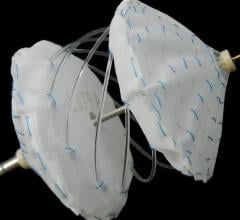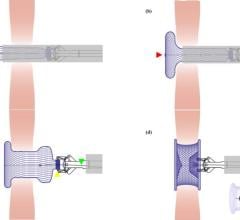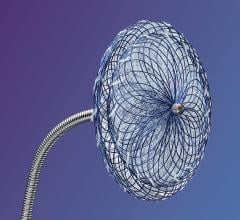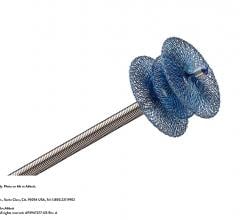
September 17, 2009 – NMT Medical Inc. said yesterday it will commence data analysis for its landmark STARFlex patent foramen ovale (PFO)/stroke and transient ischemic attack (TIA) clinical trial, CLOSURE I, in April 2010 instead of its originally scheduled fall 2010, so it can accelerate its pre-market approval (PMA) submission to the FDA.
As of April, 99.4 percent of all patient follow-up months will have been completed and 95.1 percent of patients will have completed the two-year follow-up. The results of the analysis are anticipated during the third quarter of 2010, at which point the trial will be complete, with 100 percent of the randomized patient follow-up available. If the results prove positive for device closure, the company will be in a position to submit a PMA application for its STARFlex device for the stroke and TIA indication to the U.S. Food and Drug Administration (FDA).
As previously announced, an independent group of statistical advisors determined that, with a high degree of certainty, a sufficient number of primary outcome events to demonstrate a statistically significant difference in treatment outcomes will have occurred by October 2009. By April 2010, the data is expected to have statistical power to support a primary outcome result and thus it would be scientifically appropriate to begin the analysis at that time. As a result, with FDA and Executive Committee approval, the company has elected to initiate the data analysis process earlier than the originally planned October 2010 date.
The trial is being led by principal investigators Anthony Furlan, M.D., and Mark Reisman, M.D. Dr. Furlan is chairman, department of neurology, Neurological Institute University Hospitals Case Medical Center, and Case Western Reserve University School of Medicine in Cleveland. Dr. Reisman is director, cardiovascular research and director, cardiac catheterization lab, Swedish Heart and Vascular Institute in Seattle.
“Given the amount of data that will be collected by April 2010, it is appropriate to conduct the analysis earlier than originally planned,” Dr. Furlan said. “Based on the number and timing of primary outcome events in the trial, we expect to have sufficient data to provide enough statistical power to potentially observe a significant difference in treatment alternatives.”
A PFO is a common heart defect that may be a potential risk factor for stroke, TIA, migraine or other brain attacks in some patients. The PFO allows venous blood, unfiltered and unmanaged by the lungs, to enter the arterial blood circulation. CLOSURE I is designed to evaluate the effectiveness of NMT’s STARFlex implant technology in preventing recurrent stroke and/or TIA due to a presumed, paradoxical embolism through a PFO. More than 190 leading stroke neurologists and interventional cardiologists at approximately 95 centers in the United States, Canada and the United Kingdom are participating in the study. Of the 910 stroke and TIA patients enrolled, half received PFO closure in a catheter-based procedure with NMT's STARFlex implant.
For more information about NMT Medical, please visit www.nmtmedical.com


 June 20, 2024
June 20, 2024 








